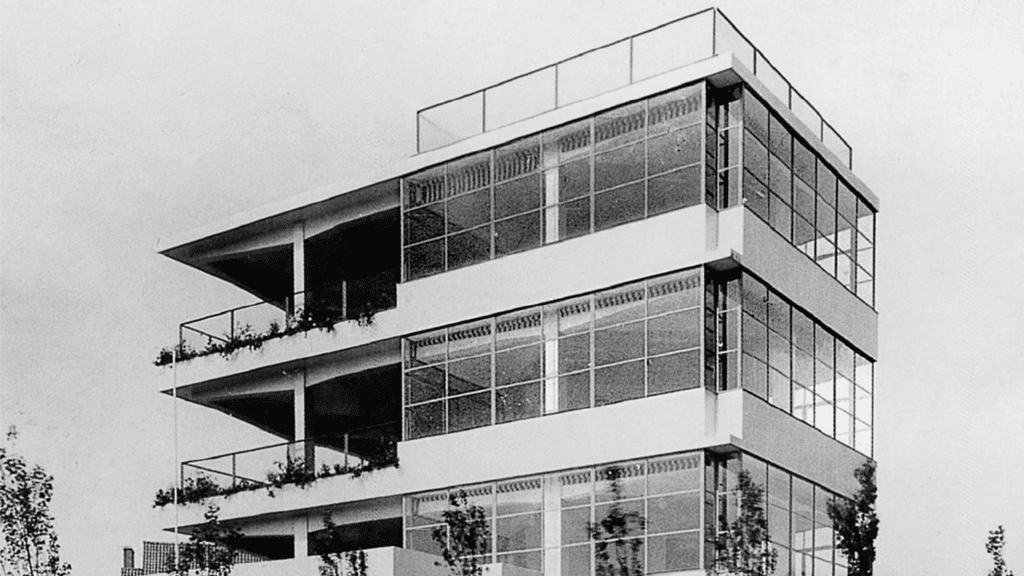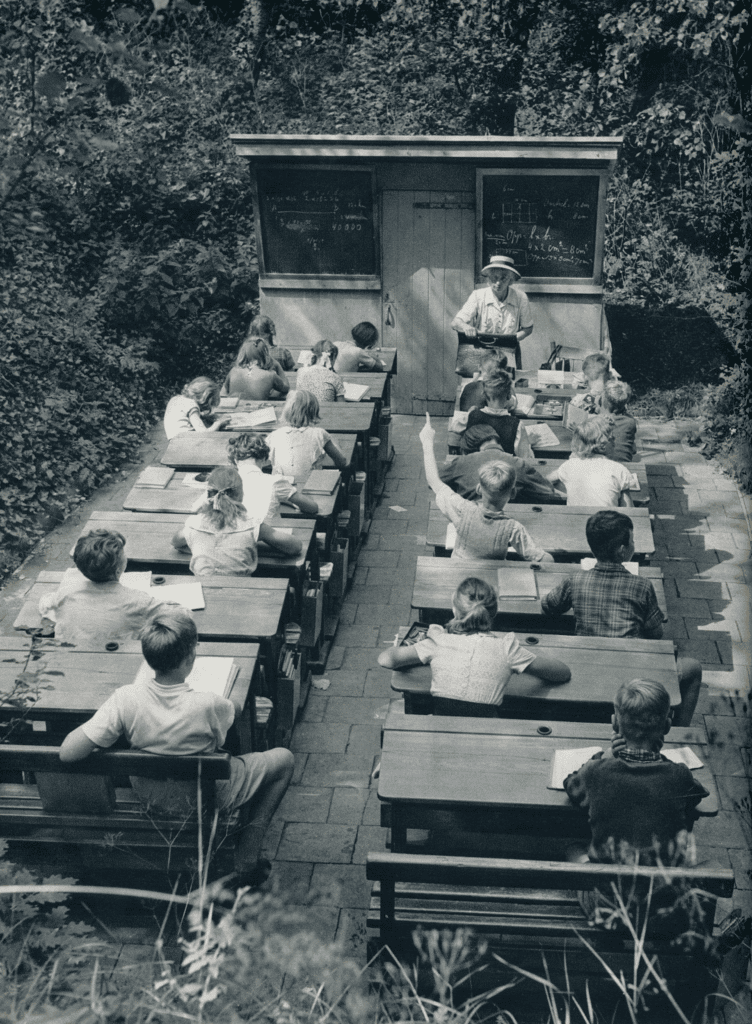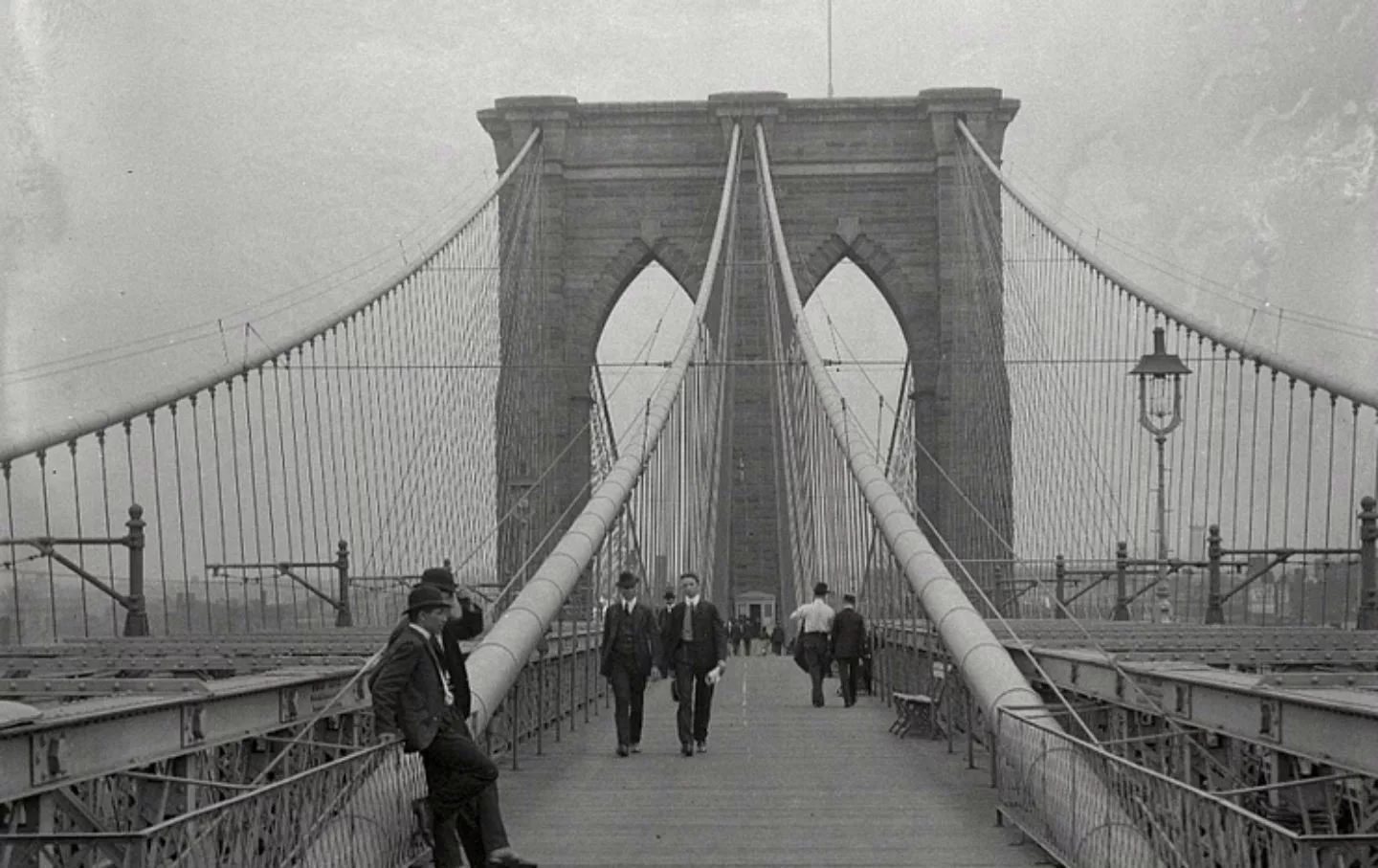In the pandemic era of the 2020s, we have become quite familiar with societal efforts to move large gatherings outdoors. But have you ever heard of the open air schools of the 20th century?
For most of us, year-round outdoor dining and limited indoor activity is a recent phenomenon that has caused us to change the way we function in our daily lives. But, in reality, open air movements are not all that new.
At the beginning of the 20th century, tuberculosis was responsible for killing one in seven people in Europe and the United States. Open air schools in the early 20th century were largely an attempt to limit child exposure to the disease, with the hope of keeping the public death toll down.
With the help of some gifted doctors and architects, these schools were able to thrive.
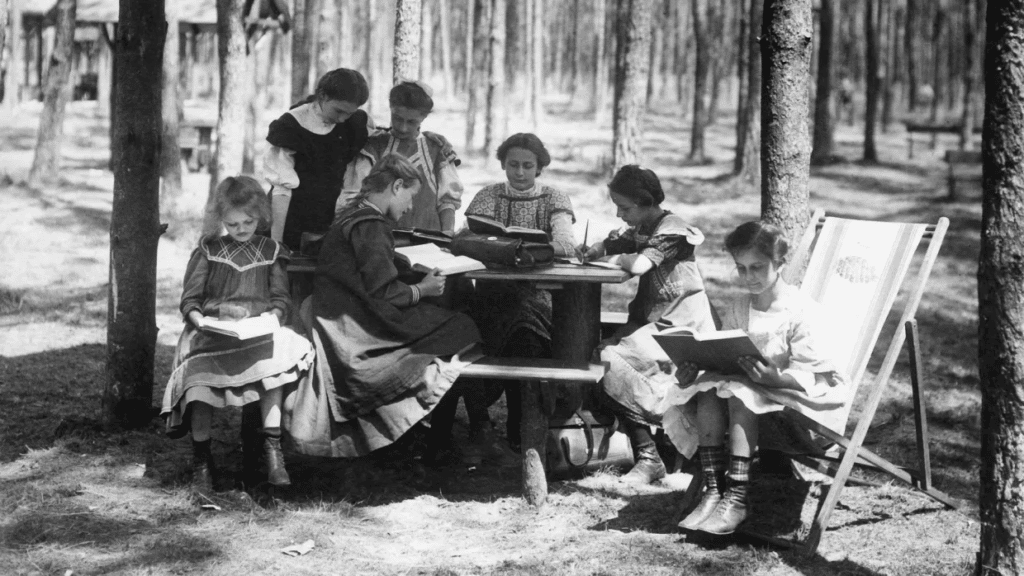
The First Open Air School
The first open air school was created in Waldschule für kränkliche Kinder (which translates to “forest school for sickly children”), in Charlottenburg, Germany in 1904. The school was built by Walter Spickendorff and founded by Jakob Bernhard Bendix.
While tuberculosis deaths were not common in children, a discovery by Robert Koch revealed that the tuberculosis was an airborne pathogen widening the public health risk. This discovery also led to the development of a “tuberculin test,” exposing large numbers of asymptomatic infected children.
Without a cure for tuberculosis, health officials were concerned with large gatherings of children with asymptomatic tuberculosis in traditional schools. The focus became targeting public environments and social behaviors in an attempt to limit exposure to the disease.
Open air schools, like the one in Charlottenburg, began popping up across Germany and around the world.
The open air school in Charlottenburg was built in the heart of a forest outside of Berlin. If the weather got too cold or rainy, simple wooden buildings were built to hold well-ventilated instruction.
An added benefit to the open air school strategy were reports of school children with various diseases experiencing significant improvements in their health as a result of spending so much time outdoors.
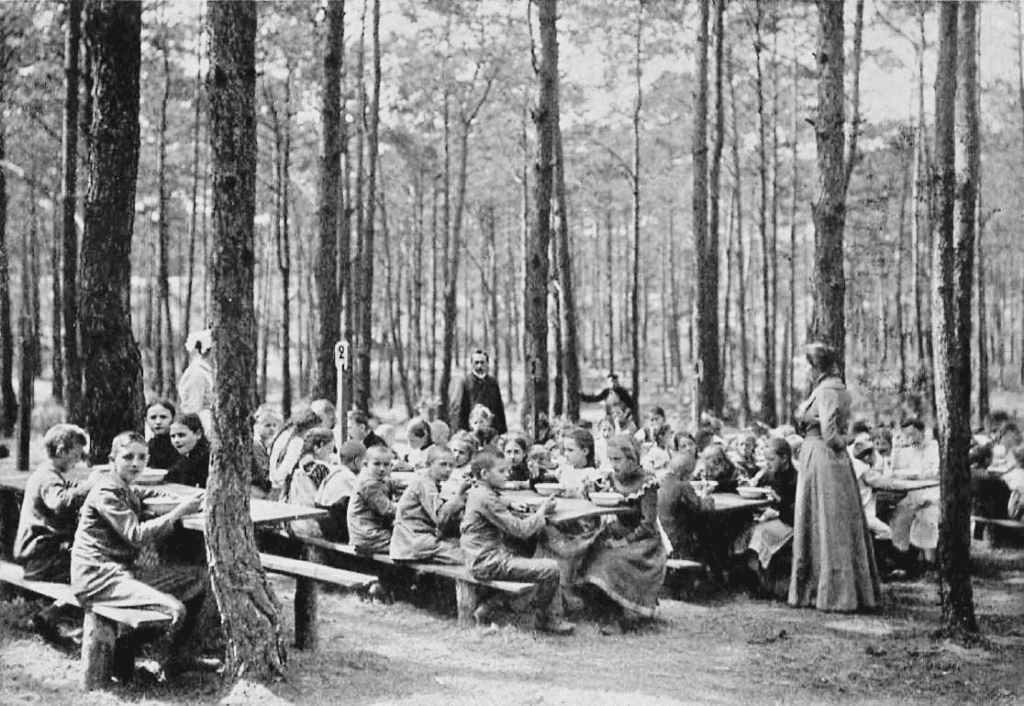
Open Air Schools Head to the U.S.
Tuberculosis wasn’t just a European problem. The U.S. was suffering from similar death rates and had relied on sanatoriums to combat the spread of the disease.
In 1908, open air schools arrived in the U.S. thanks to two Rhode Island doctors: Mary Packard and Ellen Stone.
Taking a page out of Germany’s book, the two doctors used what resources they had and converted the floor of an empty brick building in Providence to a makeshift open air school.
With windows that stretched to the ceiling that were rarely closed, children kept warm in the winter with snuggy-like blankets known as “eskimo sitting bags.” Remarkably, none of the children got sick during the frigid New England winters – bolstering the open air school even further.
Fast forward two years, there were 65 functioning open air schools across the U.S.
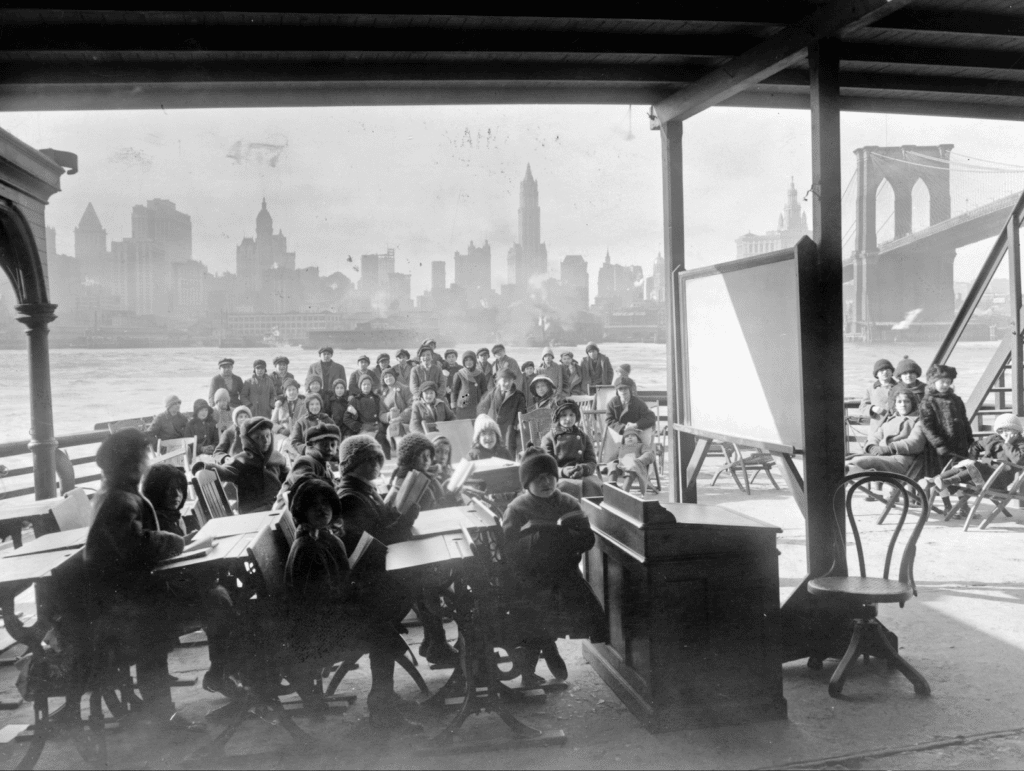
Open Air Schools Become Open For Good!
With the growing efficacy and popularity of the open air school movement, renowned architects began constructing permanent open air schools in Europe and the U.S.
In 1927, Dutch architect Jan Duiker constructed an ambitious terraced glass and concrete open air school in the center of Amsterdam. The goal of making more open air schools permanent was to cater to the health of all children – infected or not.
The open air school movement that began in the woods of Germany proved that moving class outside can save thousands of lives. What was once a relentless disease now had an observable achilles heel.
By the mid 1940s, increased sanitation efforts, open air methods and the discovery of effective antibiotics like streptomycin, caused tuberculosis to recede as a major health threat.
So, listen to your teacher, and take it outside!
